Having a healthy, clean pond on your property requires a certain amount of work regardless of where you live, but managing a pond in Texas presents a unique set of challenges.
The Difference Between a Pond and a Lake
First, let's define what we mean when we say "pond" or "lake."
Generally speaking, we use these terms interchangeably, but there are significant differences that will influence your management practices.
Ponds are relatively small and shallow - shallow enough that sunlight reaches the bottom.
Lakes generally have a larger surface area and are deeper - deep enough that there are areas of water that receive no sunlight, preventing plants from growing.
Our main focus for ponds and lakes are bodies of water that are larger than 1/4 acre. This includes both ponds and lakes in our discussions as a general rule. e aren't talking about water gardens or koi ponds!
At Pond King, our fisheries biologists have experience with a variety of challenges due to the extreme climate changes Texas and Oklahoma face each year.
Let’s take a look at the impact geography has on your management practices compared to body water size.
Universal Pond Management Practices
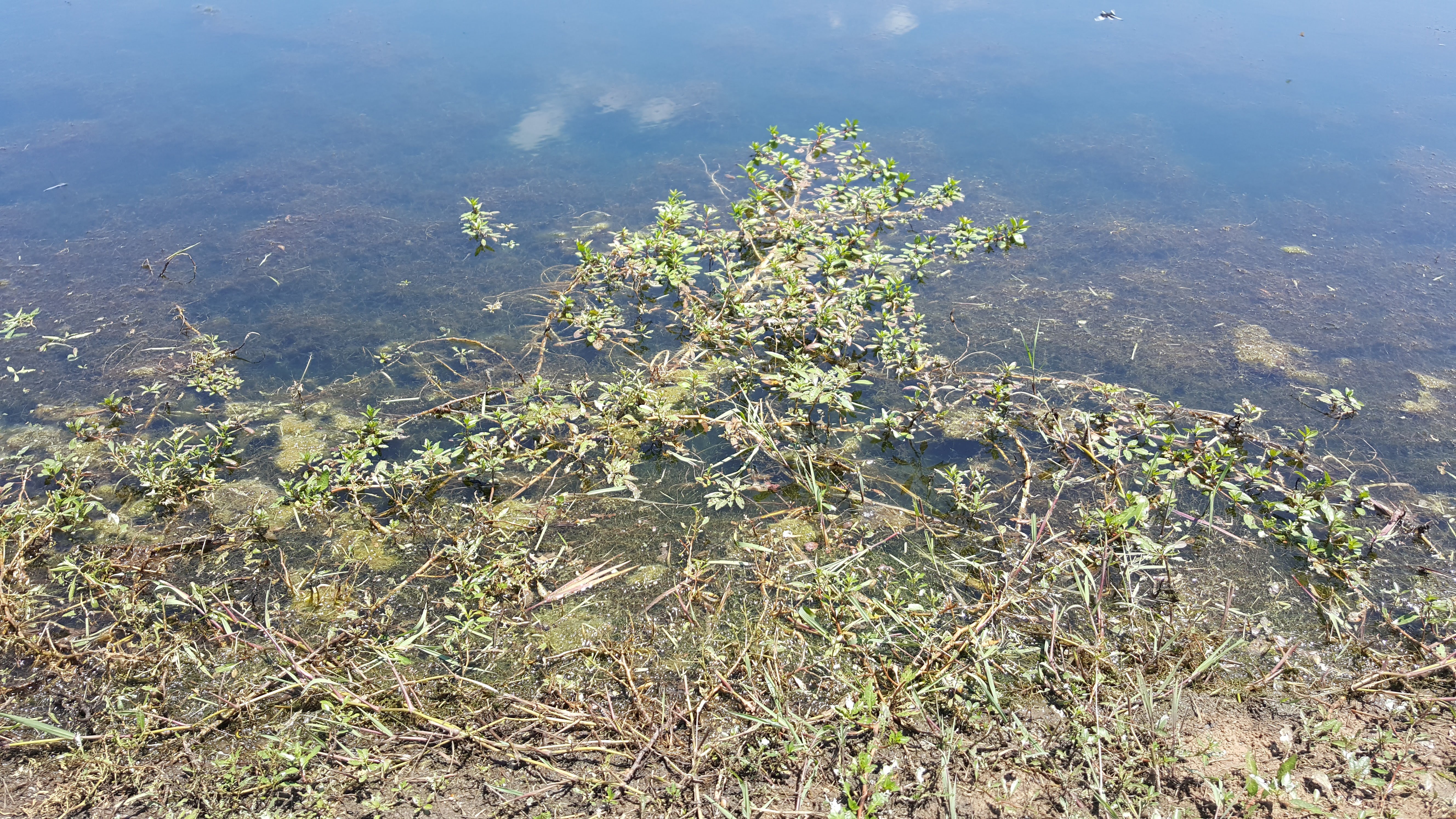
If you have a pond or lake on your property, you have essentially two choices; maintain it, or don't.
If you opt for the latter, you'll have a natural pond that may, or may not, end up covered with algae, filled with weeds, and if you have fish, fish that won't be particularly desirable.
If you opt for the former, regardless of where in the U.S. you live, there are certain things you'll need to do to keep that pond or lake clean and algae- and odor-free.
How much you'll need to do depends on the body of water's physical profile and how you want to use it, but here are some basic management practices to keep your pond healthy.
Establishing Vegetation Around Your Pond
Succession refers to the aging process of "natural" or unmanaged bodies of water.
Left unmanaged, erosion and sedimentation accumulation will eventually result in a body of water turning into a bog. The complete process takes decades and decades, but erosion and sedimentation can contribute to other issues - like turbidity and odor.
Prevent Erosion with Properly Managed Shoreline Vegetation
The best way to prevent erosion and sedimentation is by planting and maintaining vegetation along the surrounding shoreline. Ensuring you have ample terrestrial and emergent aquatic vegetation around the edges of your pond will keep sediment-laden runoff from the main body of water.
Plus, the vegetation around the pond or lake helps hold the sediment particles together, preventing them from becoming fragmented. Emergent aquatic vegetation placed at the mouths of feeder creeks helps slow down the amount of sediment that washes into the pond.
Control Algae and Pond Weeds
The types of algae and weeds will vary some based on geography.
Still, the need for controlling them remains the same: an overabundance of either can seriously diminish the aesthetics and water quality of your pond. Plus, they can create stagnant water providing excellent breeding habitat for mosquitos, and uncontrolled shoreline plants can harbor adult mosquitoes, snakes, rats, and other unwanted pests.
As with most things, an ounce of prevention is worth a pound of cure when it comes to controlling algae and aquatic weeds. And the best prevention is reducing excess nutrients.
Consider adding supplemental aeration, managing the fish population, herbicide application, and applying nutrient deprivation products appropriate for your area.
Pond Management Practices Specific to Texas
As mentioned earlier, Texas has unique challenges. The vast expanse of such a large state, with varying climates is unique to the Southern US. There are a few recommended pond management practices that really improve the quality of the fishery.
-
Supplemental Aeration
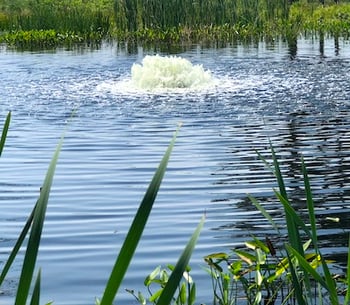
Adding aeration can be a critical management aspect for smaller ponds or lakes, especially here in Texas.
One of the biggest challenges of pond management in Texas is the extreme weather during the summer months. We get extreme heat, which elevates the water temperatures, which lowers the dissolved oxygen levels in your pond or lake. This intense heat often comes with severe thunderstorm events, which can cause a turnover in your pond.
During a turnover, the different layers of water in the pond flip over each other, depleting the pond's dissolved oxygen levels and potentially causing a fish kill.
Adding an aerating fountain or any other aerating system helps keep the dissolved oxygen levels stable, thereby preventing a fish kill.
- Excess Nutrient Management
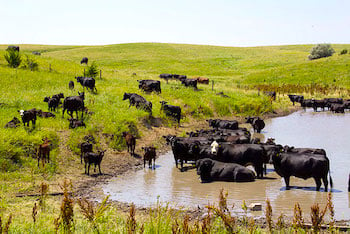
In Texas, what we describe as ponds are often large tanks designed to collect runoff to provide water for livestock. These tanks are often multi-use, but whether they are intended solely as a water source for livestock or as a fishery, too, you must manage excess nutrients for the health of the pond - and the animals that depend on it.
The runoff will wash cattle waste and fertilizers into the tank, introducing excess nutrients such as phosphate and nitrogen, which are not necessarily harmful to the fish in the pond but will have some different effects on the pond.
Because these tanks are designed to collect runoff, the challenge is managing the excess nutrients that are a by-product of the tank's design.
- Vegetation Control
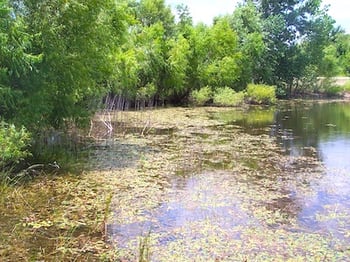
Because of the extended growing season, vegetation control is another major challenge with ponds and lakes in Texas, especially ponds with clear water.
The extended growing season, combined with clear water, allows sunlight to reach the pond's floor, promoting vegetation growth. The easiest way to help control vegetation issues in a clear water situation is to fertilize or add dye to your pond.
Adding these to your pond reduces the clarity of the water in your pond, preventing sunlight from reaching the pond's floor. The fertilizer creates a planktonic bloom in the pond, turning the water a green color that prevents sunlight from penetrating through the pond as easily and helps prevent vegetation growth.
The same goes for adding dye to your pond, but instead of creating a planktonic bloom, the dye adds color to the water, reducing light transmission.
- Seasonal Fish Stocking
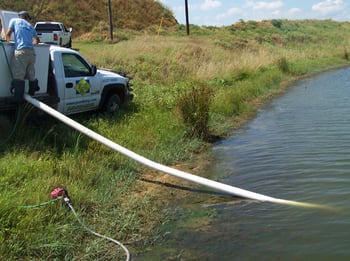
Fish stocking here in Texas is seasonal due to the extreme weather throughout our different seasons. Our main fish stocking seasons are during the Spring and Fall.
We don't recommend stocking your pond with fish during the summer and the winter months because the water temperatures are too extreme, increasing the amount of stress imposed on the fish during transport. When fish become stressed, their fitness lowers, and they are more susceptible to disease and parasites once they arrive at their new home. Adhering to the recommended Seasonality of Fish Stocking is crucial for each fish species to have the highest survival rate after transportation and stocking.
- Biological Vegetation Control
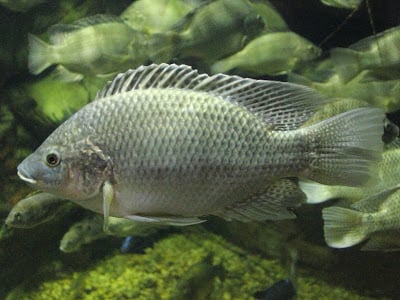
Biological vegetation control is the practice of stocking exotic species such as Triploid Grass Carp and Mozambique Tilapia. These species can be great for a pond in the right situations, as they both are herbivorous fish.
Grass Carp will consume the submerged vegetation in ponds and lakes, such as Southern Naiad.
Tilapia eat filamentous algae, which creates unsightly mats that float on a pond's surface. Grass Carp and Tilapia are great alternatives for vegetation control in your pond if you do not want to use chemicals. Tilapia also provide a lot of extra forage for your bass as they reproduce every 4-5 weeks throughout the summer months.
Depending on where you live, you may be required to have a permit to stock either species. If you have more questions about whether these species would be beneficial for your pond or to see if you need a permit, read our blog on Stocking Exotic Species in Texas Ponds and Lakes.
4 Ways Pond King Can Help Manage Your Pond or Lake
Pond King offers various services and products to help you conquer the different pond management challenges specific to Texas and southern Oklahoma.
1. Fish Stocking Expertise
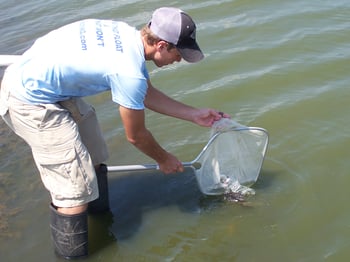
We have years of experience stocking fish in Texas, so we know which species are best suited for our climate.
If you are unsure of what species of fish or how many of them you should stock, our biologists can help make recommendations to maximize your fishery's production.
Depending on your fishery goals, we'll help determine which species to stock in your pond and what other management practices you should follow. Our biologists will also tell you when you should stock these fish as there are specific times, certain fish should be stocked.
2. Artificial Fish Habitat

While we haven't addressed this particular issue, an important aspect of fishery management is ensuring your fish have cover throughout their various life stages.
Pond King manufactures artificial fish habitat made of high-density polyethylene, which does not become brittle or leach chemicals into your pond like other structures and does not break down and decompose such as natural structures.
Protect Your Fish from Predation
Our habitat not only offers protection from aquatic predation but also helps protect your fish from predation from birds such as cormorants. Cormorants are a protected species that feed prolifically on schooling fish during the winter months in both shallow and open water areas.
Having hard structural habitat in all depths of the pond provides ample cover for your fish so that they can effectively evade predation.
Another great option to help with this problem is aquatic vegetation. Like Coontail, American Pondweed, and others with expansive spaces, certain aquatic vegetation species are also great for helping fish avoid predation from birds.
3. Aeration System Selection

If you think your pond needs to have an aeration system, the biologists at Pond King can recommend which system is best for your situation.
Aerating fountains are a great option in most ponds as they help increase oxygen levels which allows your fish to stay healthy and less stressed. These systems do require some maintenance and our professionals have experience in helping troubleshoot whatever problems your system may be having.
Talk to one of our biologists or read our other blogs on aeration systems if you have any questions or are thinking about purchasing an aeration system for your pond or lake.
4. Water Quality
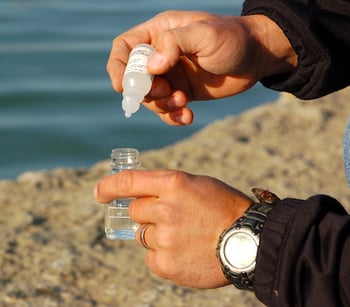
Monitoring the water quality in your fishery will ensure there aren't any un-seen stressors limiting your fish's growth and is especially important for ponds and tanks located in agricultural watersheds.
If you are unsure if your water is safe for your fish, you can take a water sample by simply filling a water bottle up with your pond water and bring it to us for testing. From there, we can test the pH, alkalinity, and total hardness levels to see if they are within normal ranges for fish survival. If some of your levels are not within the acceptable ranges, we can recommend treatments to restore them to a suitable level.
As you can see, managing a pond or lake in Texas can be a challenging task, but if done correctly, it can be a gratifying experience once you reach your goals for your fishery.
Pond King is the Texas Choice for Lake and Pond Management
Our biologists at Pond King have years of experience managing private fisheries for clients and can create a personalized management plan to help you reach your fishery goals and protect your investment from extreme heat and severe storms. If you have questions about managing your pond or lake, come by and see us at our location in Gainesville, Texas, call or contact us today!.
See y'all down at the pond!




